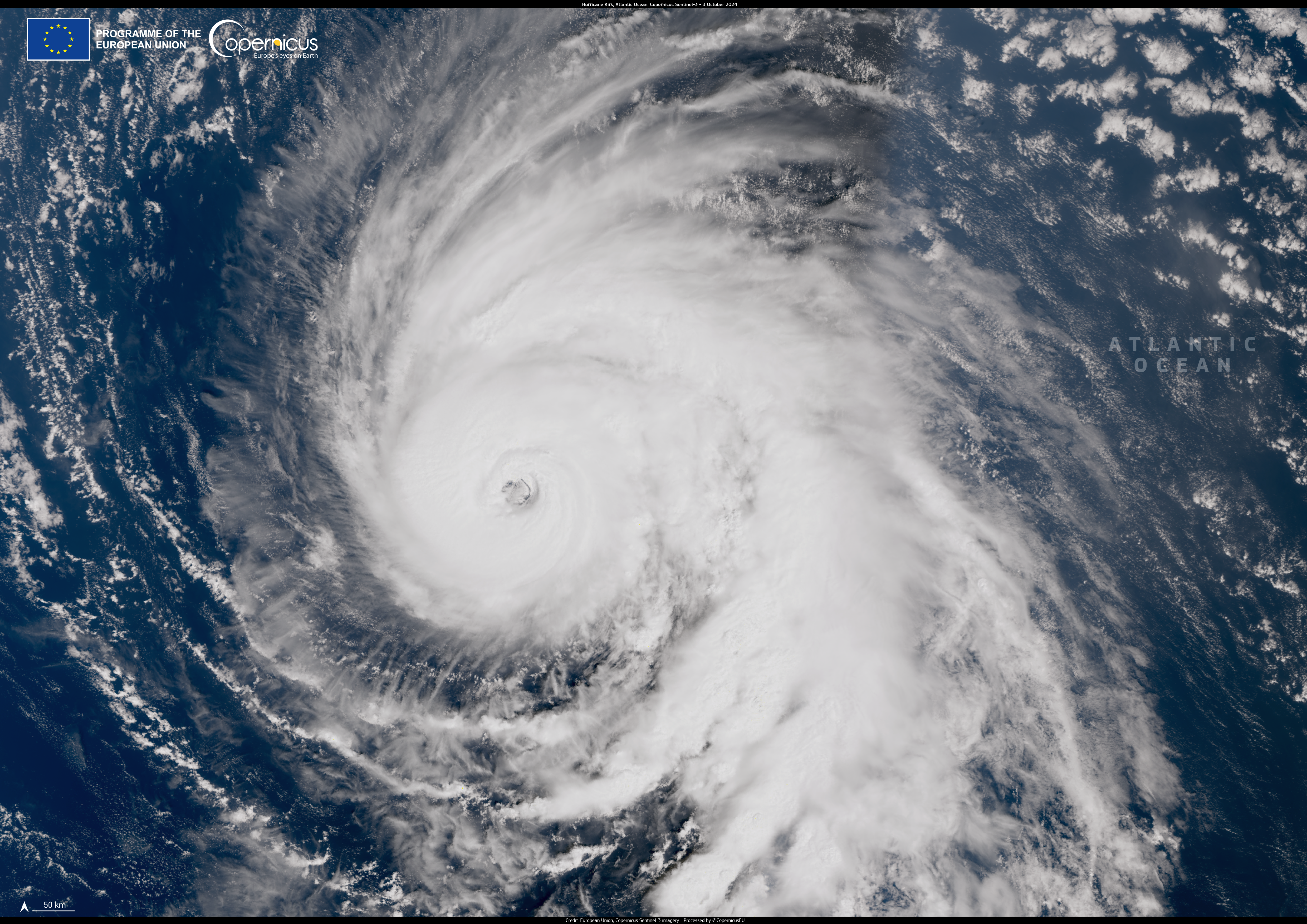
Rising ocean temperatures, a direct result of climate change, has been long warned by climate change experts as a cause that will lead to the development of more powerful hurricanes. Since warmer waters are expanding, so are the regions where hurricanes can form and survive, meaning storms can nowadays travel farther and retain their intensity for longer.
Storm Kirk, originated as a hurricane, is a recent example of this phenomenon. It retained significant strength as it crossed the Atlantic, highlighting a growing threat: the potential for stronger storms to reach European shores. It has particularly impacted the provinces of Pontevedra, where Moaña is located, and A Coruña, still bringing heavy rain and strong winds to Galicia on 9 October 2024.
Hurricane Ophelia, that occurred in 2017, has many similarities with Kirk. It made an unusual journey across the Atlantic, eventually hitting Ireland as a powerful ex-hurricane. Though the damage from Ophelia was not catastrophic, it already exposed the vulnerability of regions not accustomed to such storms, which suggests that Europe may face a growing risk from cyclones in the future, driven by changing climate patterns.
The risk to sewer systems and LIFE RESEAU
The combination of more intense storms and heavier rainfall events poses a significant risk to our sewer systems. Sewer systems, particularly combined sewer networks that handle both wastewater and stormwater, were designed for historical weather patterns. These systems are now being over overwhelmed by the increased water volumes associated with climate change events.
This is the reason why LIFE RESEAU was conceived to develop and test solutions aimed at mitigating the impact of heavy rainfall in northern Europe, where urban wastewater infrastructures of many urban areas are already struggling to keep up with increased precipitation.
What are the main consequences of insufficient capacity of urban infrastructures?
When sewer systems are overwhelmed by excessive rainfall, they often discharge untreated sewage and stormwater directly into rivers, lakes, and oceans. This is called Combined Sewer Overflows (CSOs) which results in environmental pollution, harming aquatic ecosystems.
Moreover, sudden influx of stormwater can overload wastewater treatment plants, reducing their effectiveness. As they are designed to manage specific capacities for which they can provide an adequate treatment, when this inflow surpasses their capacity, the process may become less effective, leading to the release of partially untreated water into the environment.
What is the LIFE RESEAU approach to manage heavy precipitation events?
The LIFE RESEAU project focuses on retrofitting existing systems to expand treatment capacity and improving decision-making. Its key solutions impact on the infrastructure and how decisions on their planning and operation are made. This includes Advanced Biofilm Reactors and Stormwater Management Units, that are technologies designed to increase the capacity of wastewater treatment facilities during extreme weather events without additional land requirements, and a Decision Support System, named SiiMS, which includes predictive monitoring tools, allowing for better anticipation and response to heavy rainfall events.
Featured image: Image of the day: Hurricane Kirk. Credit: European Union, Copernicus Sentinel-X3 imagery

